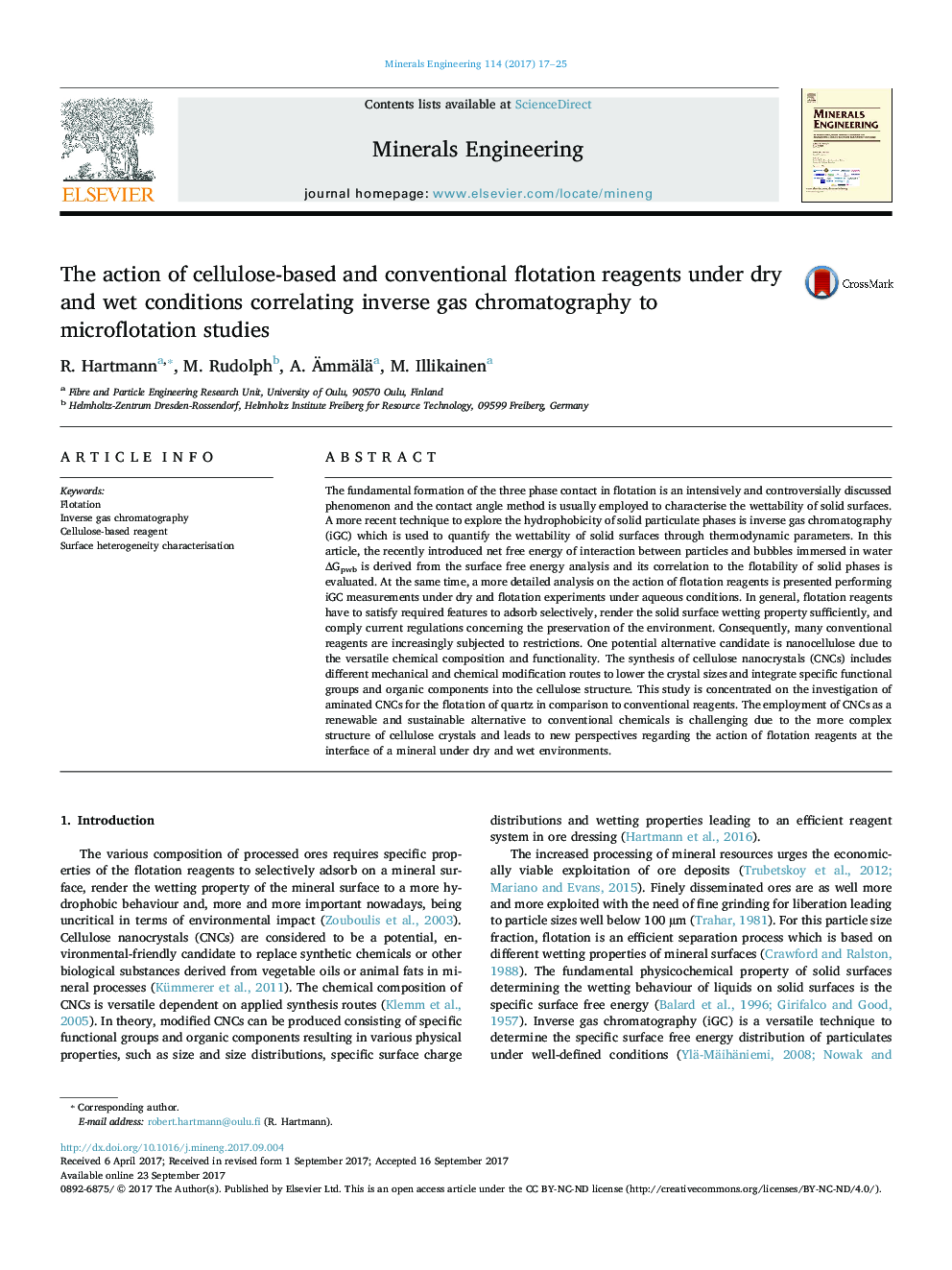| Article ID | Journal | Published Year | Pages | File Type |
|---|---|---|---|---|
| 6477768 | Minerals Engineering | 2017 | 9 Pages |
â¢The efficiency of hexyl-amine cellulose nanocrystals as sustainable flotation reagent.â¢Characterisation of solid surface heterogeneities by inverse gas chromatography.â¢Derivation of the net free energy of particle-bubble-interaction based on inverse gas chromatography.â¢Discussion about the effect of different environments on surface energetics.
The fundamental formation of the three phase contact in flotation is an intensively and controversially discussed phenomenon and the contact angle method is usually employed to characterise the wettability of solid surfaces. A more recent technique to explore the hydrophobicity of solid particulate phases is inverse gas chromatography (iGC) which is used to quantify the wettability of solid surfaces through thermodynamic parameters. In this article, the recently introduced net free energy of interaction between particles and bubbles immersed in water ÎGpwb is derived from the surface free energy analysis and its correlation to the flotability of solid phases is evaluated. At the same time, a more detailed analysis on the action of flotation reagents is presented performing iGC measurements under dry and flotation experiments under aqueous conditions. In general, flotation reagents have to satisfy required features to adsorb selectively, render the solid surface wetting property sufficiently, and comply current regulations concerning the preservation of the environment. Consequently, many conventional reagents are increasingly subjected to restrictions. One potential alternative candidate is nanocellulose due to the versatile chemical composition and functionality. The synthesis of cellulose nanocrystals (CNCs) includes different mechanical and chemical modification routes to lower the crystal sizes and integrate specific functional groups and organic components into the cellulose structure. This study is concentrated on the investigation of aminated CNCs for the flotation of quartz in comparison to conventional reagents. The employment of CNCs as a renewable and sustainable alternative to conventional chemicals is challenging due to the more complex structure of cellulose crystals and leads to new perspectives regarding the action of flotation reagents at the interface of a mineral under dry and wet environments.
Graphical abstractDownload high-res image (38KB)Download full-size image
